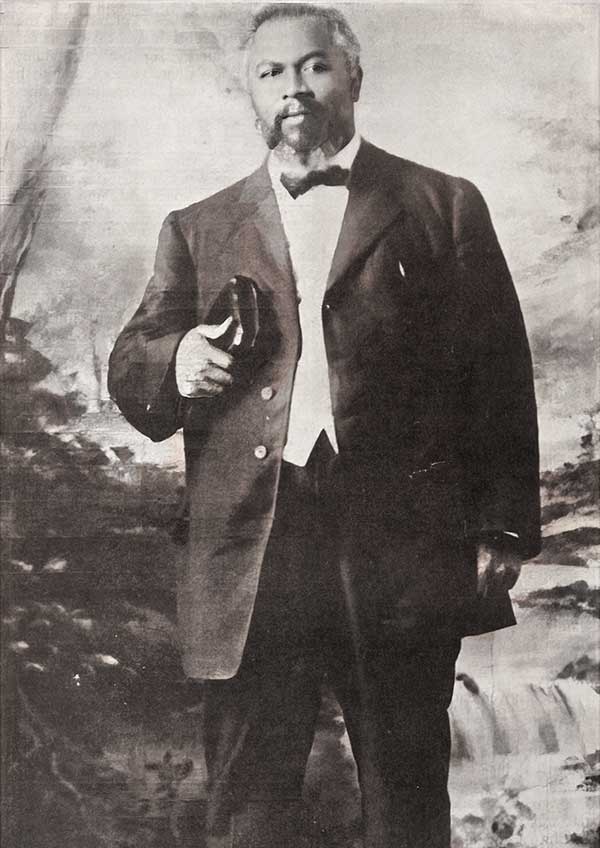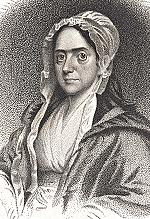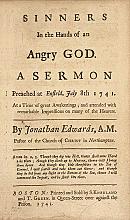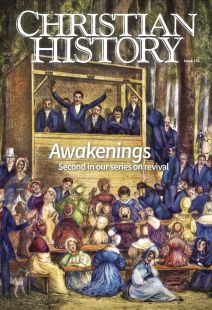Christian History timeline: awakenings, renewals, revivals

[William Joseph Seymour, c.1910, photograph—Azusa / Public domain, Wikimedia]
—1540 Ignatius of Loyola founds Society of Jesus, leading to Jesuit missions.
—1545–1563 The Council of Trent convenes in response to the Protestant Reformation.
—1558 Elizabeth I’s reign begins. The “Elizabethan Settlement” will displease both Catholics and Protestants.
—1576 Queen Elizabeth I orders suppression of Puritan “prophesyings.”
—1581 George Gifford writes Country Divinity, a fictional dialogue defending Puritanism.
—1610 Johann Arndt publishes The True Christianity.
—1635 Angelique Arnauld becomes a Jansenist; the convents at Port-Royal become Jansenist strongholds and popularize Jansen’s work.
—1648 The Treaty of Westphalia allows rulers to determine the religion of their territories.
—1669 Solomon Stoddard preaches his first sermon at Northampton Church.
—1675 Philipp Spener prefaces a new edition of True Christianity with “The Pia Desideria,” starting the Pietist movement.
—1679 Revival breaks out in Northampton under Stoddard.
—1695 August Hermann Francke opens an institute to care for orphans, which becomes the Halle Project.
—1707 The Children’s Prayer Revival in Silesia begins spontaneously. It spreads to thousands of children in a year.
—1720 Theodore J. Frelinghuysen preaches heartfelt conversion in New Jersey, which influences William Tennent and his son, Gilbert Tennent.
—1722 Nicolaus von Zinzendorf opens his estate to religious refugees at Herrnhut.
—1727 Zinzendorf compiles a set of principles for the community at Herrnhut, known as Unity of the Brethren. The resulting prayer meeting leads to a revival. William Tennent founds the Log College in Pennsylvania.
—1729 Charles and John Wesley form the Holy Club. George Whitefield joins them. Their prayer meetings later grow into the Methodist movement.
—1732 Alphonsus Liguori founds the Congregation of the Most Holy Redeemer, which combats Jansenism and becomes the Redemptorist order. Missionaries leave Herrnhut; their communities become the Moravians.
—1734 Congregants respond intensely to Jonathan Edwards’s sermons.
—1737 Edwards records the “religious affections” in Northampton as A Faithful Narrative of the Surprising Work of God.
—1738 The Wesley brothers are spiritually awakened at Moravian worship services.
—1739 Whitefield makes his first preaching tour through the American colonies, where he meets Edwards and Benjamin Franklin.
—1740 Anna Nitschmann becomes a missionary in Pennsylvania.
—1741 Edwards preaches “Sinners in the Hands of an Angry God” in Northampton, further catalyzing the Great Awakening.
—1743 Gilbert Tennent preaches “Dangers of an Unconverted Ministry,” which creates deeper division between “Old Lights” and “New Lights.”
—1749 Jonathan Edwards writes The Life of David Brainerd. His biography inspires William Carey to missions in India.
—1757 Pope Benedict XIV amends the Roman Index of Forbidden Books, granting permission to print and read Bibles in the vernacular.
—1770 A violent confrontation, known as the Boston Massacre, takes place between British soldiers and colonials.
—1771 Mary Bosanquet writes to John Wesley to defend her preaching.
—1773 David George founds Silver Bluff Baptist Church.
—1775 Britain declares the American colonies to be in a state of rebellion after the Battles of Lexington and Concord.
—1776 The Declaration of Independence is ratified in Philadelphia.
—1783 The American Revolutionary War ends with the Treaty of Paris.
—1784 John Wesley permits American Methodists to be a separate denomination, which Francis Asbury leads.
—1790 Jeremiah Minter becomes the youngest elder in the Methodist Church.
—1791 The First Amendment to the US Constitution prohibits a nationally established church.
—1798 Lorenzo Dow’s circuit preaching ministry begins.
—1792 Andrew Fuller and other Baptists form the Baptist Missionary Society.
—1794 Richard Allen founds Mother Bethel African Methodist Episcopal Church in Philadelphia.
—1800 Francis Asbury embraces camp meetings after visiting Kentucky’s Red River Revival.
—1801 The Cane Ridge Revival begins in Kentucky.
—1804 Barton W. Stone publishes Last Will and Testament of the Springfield Presbytery, marking his withdrawal from Presbyterianism and a coalescing of the restoration movement later known as the Stone-Campbell movement.
—1806 Peter Cartwright is ordained to the Methodist ministry and begins preaching in the West.
—1810 The American Board of Commissioners for Foreign Missions (ABCFM) is formed.
—1814 Baptists found the Triennial Convention.
—1816 The American Bible Society (ABS) is founded. Allen founds the African Methodist Episcopal denomination.
—1821 Charles Finney experiences conversion and moves into preaching ministry.
—1828 Andrew Jackson is elected president.
—1831 Finney oversees massive evangelistic success in Rochester, New York.
—1835 Finney publishes his Lectures on Revivals of Religion.
—1842 Revival breaks out in Germany after Johann Christoph Blumhardt casts out demons by prayer.
—1846 Cartwright loses a congressional race to Abraham Lincoln.
—1850 Dorothea Trudel’s “prayer of faith” for her employees results in healing and revival in the village of Männe-dorf, Switzerland.
—1861 The American Civil War begins.
—1863 President Lincoln commissions Henry Ward Beecher for a preaching tour to convince both Europeans and Americans to support the Union.
—1865 The American Civil War ends.
—1875 The Keswick movement begins; D. L. Moody preaches to 2.5 million in London services.
—1880 Elizabeth Baker opens a healing home in London.
—1881 Charles Cullis holds healing services and builds his first “faith-cure” home. A. B. Simpson experiences healing.
—1885 Maria Woodworth-Etter begins preaching and faith healing.
—1886 Billy Sunday becomes a Christian.
—1887 The Christian Alliance and the Evangelical Missionary Alliance are founded. They later merge to become the Christian and Missionary Alliance.
—1891 Sunday leaves professional baseball for ministry.
—1906 William Seymour leads the Azusa Street Revival. Holiness and faith healing movements form the foundations of Pentecostalism.
By the editors
[Christian History originally published this article in Christian History Issue #151 in 2024]
Next articles
Words that bring the dead to life
Issue advisor Michael McClymond walks CH through revival preaching
Michael McClymondSupport us
Christian History Institute (CHI) is a non-profit Pennsylvania corporation founded in 1982. Your donations support the continuation of this ministry
Donate







